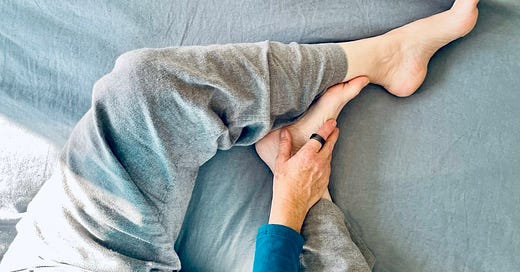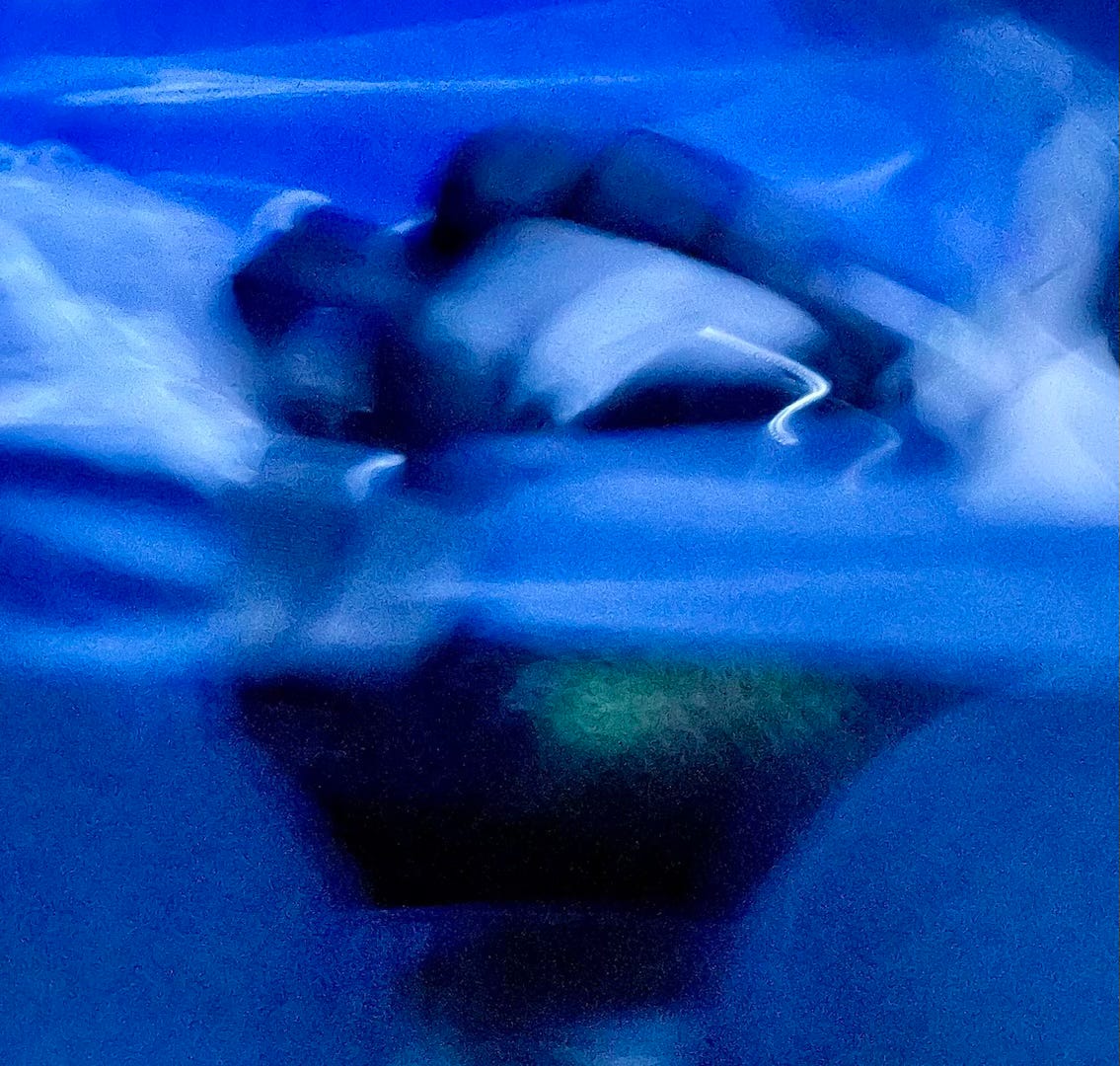You’re reading life: examined, a compendium of ideas, thoughts, and questions about living a creative, intentional life—written from my home in Portugal to you.
—> life: examined is reader-supported through buy me a coffee <—
Greetings and welcome to life: examined 2025.
Whether you're a new subscriber (welcome!) or have been around since my move to Portugal from the U.S., I'm glad you're here. I hope you'll continue to read my sporadic publication of essays and explorations of life—inner, outer, and abroad.
I don't know where to start this tale, when to end it, or what to include, as I'm not sure when it began or how it will end—other than the big ending, that is. So here I go, throwing up on the page in an attempt to tell the story in a semi-coherent way.
It's a story that's hard to share because it's a coming-out of sorts.
It's hard to share because I don't like talking about it to anyone other than close friends; even then I don't like talking about it so I can avoid questions I don't have answers to.
Mostly, I don't like talking about it because it's hard to define.
Using medical terms and labels only invite more questions. I understand people want to know what’s up, why they don’t see me around as much as they used to, and that their curiosity comes from a place of care. But whatever I say never seems to get at the kernel of the problem. The answers I offer feel watered down in comparison with my lived experience inside this organ casing.
Plus, I don't want anyone to feel sorry for me or to offer advice—or worse, to deliver a platitude about God and what we can handle. It's draining and most days I don't have the energy to field queries about my health.
You see, I live with chronic pain, fatigue, and a host of other maladies —disabilities most annoying and mostly invisible.
No Cane, No Vest
I don't use a cane or mobility device, nor do I have a service dog with a vest (although Milo would look fab in a green velvet vest).
Without using support devices that mark one as disabled, it's unlikely you'd notice my constant companions, pain and fatigue. But like stalwart travelers, these two accompany me wherever I go.
I have learned to manage my life in a way that allows me to go undetected. Designing my life to minimize additional pain or suffering is one of the main reasons I worked for myself for so many years. That, and learning how to mask.
To Mask or Not to Mask
One of the reasons I’m writing this is to shed light on how many of us, those with invisible disabilities, mask or hide their condition to fit cultural conditioning and stereotypes of what an intelligent, competent, and fully able human looks like.
We can be all those things—I am all those things—but inside, those of us who mask are hiding our essential selves from the world out of fear of ridicule, lost opportunities (jobs, etc.), and awkward social situations.
As we educate ourselves about masking, many of us who’ve been doing this for-ever are not sure who we are or where the face we’ve been presenting to the outside world ends and our real one begins.
Some people with invisible disabilities (or those who are neurodivergent, etc.) learn about masking later in life; this knowledge can be shocking or even saddening. Often, a process of grieving begins for the “person” they could have been, instead of hiding away from the world.
What About the Pain?
The pain? It fluctuates in severity.
Even if I'm feeling good and looking healthy, I’m likely managing some level of pain, from mildly vexing to <insert your idea of physical hell, here>.
And the fatigue? It can be extreme and debilitating.
This fatigue isn't just a case of being tired. It isn't the fatigue that comes from working back-to-back shifts at the Starbucks drive-up window; no, it’s a bone dead can't lift my body out of bed because it feels like someone siphoned out all my blood kind of exhaustion.
It's scary. It feels like the beginning of the end when I'm in the grip of it.
Despite reminding myself that I've been here before and probably will be again, and that the nerve, joint, and muscle pain will eventually mellow out for a while, it’s hard not to get caught in a spiral of gloomy doom-y thoughts.
When I was younger, I could push through all but the worst pain episodes.
I'd work extended hours on hard tile floors wearing ridiculous shoes that conformed to the dress code, where the only time I could sit down was during my 30-minute lunch break. If I got one, that is.
I often juggled multiple jobs to keep a roof over my head, even if that roof could soon be that of my '66 VW bug.
Now, it seems quitting the work phase of my life gave my body permission to have a complete breakdown—a breakdown that working held at bay through crotchety determination and dumb luck.
And although this latest occurrence isn't the first crash, this one's been a doozy.
Episodes & Flare-ups
Significant episodes come on without warning.
Big life changes and stress can be either catalysts or aggravators of the pain and fatigue.
There's a hierarchy: Episodes are intense and prolonged. Episodes feature flare-ups, which are spikes within the episodes. Make sense?
Ordering the symptoms from 1 to 5 to represent intensity makes the pain and fatigue feel less amorphous and makes communicating with my partner easier and more precise about my needs.
I know the pain and exhaustion are real (as much as anything is real), but sometimes I worry that I'm "faking it," especially if I've consumed too much online ableist content of bodies that can do all the things and look glorious doing them, so I avoid these images (and social media) as much as I can.
So, What is it?
If you're familiar with the symptoms of fibromyalgia (fibro)1, then you'll know one of my body's chronic and incurable ailments.
Fibro delivers a variety of symptoms, including pain and fatigue. Joints, muscles, bones—all are fair play for fibro pain. Oh, brain fog and sleeplessness, too.
Fibromyalgia is an energy and joy zapper that doesn't allow your body to get deep and restorative sleep, which makes it impossible to heal. Save for a few exceptions, I haven't had a long stretch of good sleep for what seems like decades.
The sleep deficit is real.
Now, take this deficit and add a generous scoop of trauma, which has resulted in, among other things, lifelong hyper-vigilance; then sprinkle in neurodivergent quirks, including extreme sensitivity to light, noise, smells, fabrics, clothing tags, and more.
Does it Ever go Away?
Sometimes, my body gives me respite for a few weeks, months, or even a year or two—though not without some degree of pain and fatigue to remind me there's more where that came from.
Even when I feel pretty good, my body challenges me daily. I go to bed at night, often afraid of what fresh hell she'll serve the following day.
Will I be able to get up and make coffee, take care of daily tasks, meet a friend for lunch, or do one small creative thing like writing or baking cookies (cookie baking is an important activity around here)? Or will it be a day where I see my duvet more than anything else?

Gratitude
I’m amazed that this body has taken me, inexplicably and beyond reason, from here to there and back again. This is not the body I’d wish for, if I had my druthers, but I know fibromyalgia and her friends are teachers.
What have I’ve learned so far?
I’ve learned to have deep empathy for all those who suffer, that it’s okay to feel sorrow and grief about living in a body that isn’t the one you’d choose, and how to accept help with gratitude (oh, the vulnerability!).
Also, the pain and fatigue keep me living in the present. And isn’t that where we’re all supposed to be?
A note about this post:
I'm not looking for pity, sympathy, recipes from an ancient herbal written on curled goatskin, or a curative spell that came to you in a dream.
I've been living with and managing the eccentricities of this body most of my life, which includes trying ALL THE THINGS. I'm still trying, and gratefully, I have support.
If you relate to anything I’ve written (I’m sure some of you do) and feel like sharing in the comments section, please do. It helps to know we’re not alone in dealing with difficult things—and other life: examined readers may find your words a balm.
ONE FINAL THING:
Los Angeles, My heart aches for you.
Sending love and donations to those who are dealing with the devastating fires, including those involved with public safety. Here are some links so you can help those in need (don’t forget the animals…)
Thanks Rich, Lynn, Lisa, and Peter for your generous support of life: examined through Buy Me a Coffee. I appreciate you!
Whether you post a comment, share my work, or buy me a coffee, I’m grateful to have you along for the journey.
Fibromyalgia is a medical syndrome that causes chronic widespread pain, accompanied by fatigue, awakening unrefreshed, and cognitive symptoms. Other symptoms can include headaches, lower abdominal pain or cramps, and depression. People with fibromyalgia can also experience insomnia and general hypersensitivity. (Wikipedia)






Hi Shanna,
I have been following you since the beginning of your journey to Portugal. I’m originally from San Diego too, but I am in Hawaii now, after a couple of years in Thailand.
I had disabling CFS and fibromyalgia for 20 years. Doctors basically dismissed me as crazy until I got tested and found that I was positive for Lyme disease.
Treatment took time, but I am 90% better! I am telling you this because I’m so sympathetic to your situation. I honestly didn’t think I would ever be well again. I hope somehow you can get the help you need to recover.
Your story is all the more inspiring considering the difficulties you’ve overcome to make a new life in Portugal!
Wishing you all good things in the year ahead!
Thank you for this post. I can tell how hard it has been for you to share it.
I have (mild) fibromyalgia and (bad) chronic migraine. I try very hard not to mask it - I try to live my life openly and honestly and if people are troubled by it, I'm ok with that.
I want to offer one thing I've learned: I have someone I know who offers me the phrase "This too shall pass." When I am in the midst of the worst of it, I completely forget it will end. I hope this might help you as well.